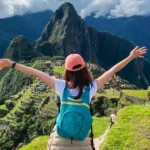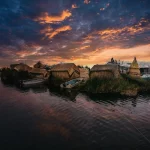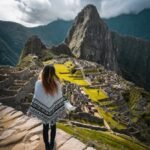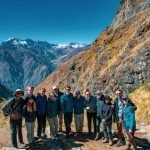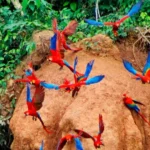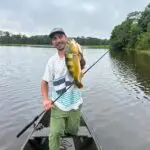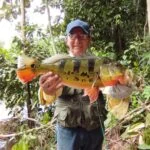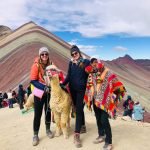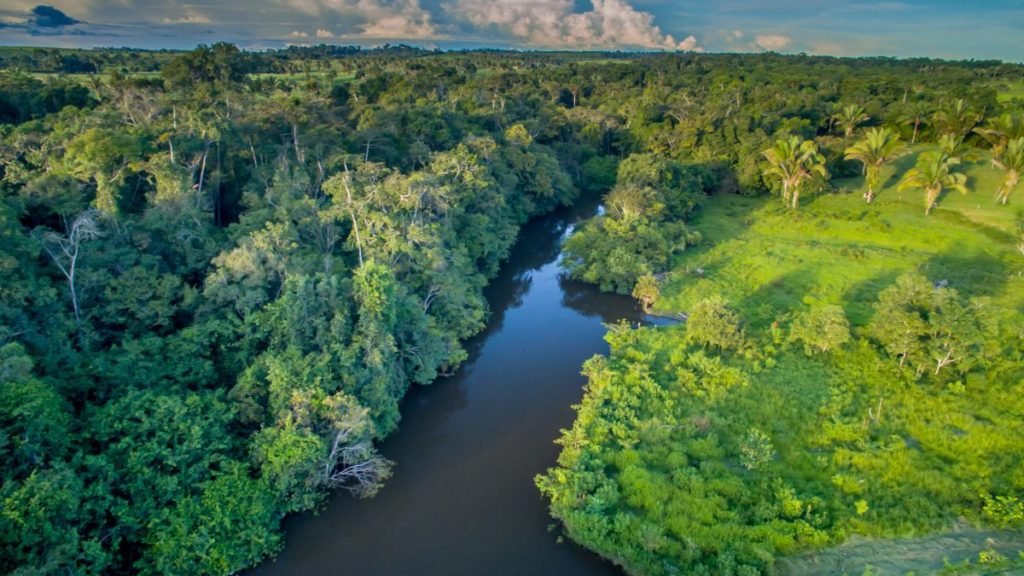
Tambopata National Reserve: Travel Guide

📋 Índice de Contenido
The Tambopata National Reserve is composed of 247,690 protected Amazonian hectares in southeastern Peru. It has a tropical climate that ranges between 17 and 39 degrees Celsius and is located at an altitude of approximately 218 meters above sea level, has more than 1200 types of plants and about 2360 animal species, most of which are endemic. Because of everything we have just told you, this is usually a great destination for a pleasant and impressive vacation. Learn in this article all about what you can experience in this remote corner of the world.
Everything you need to know about Tambopata National Reserve
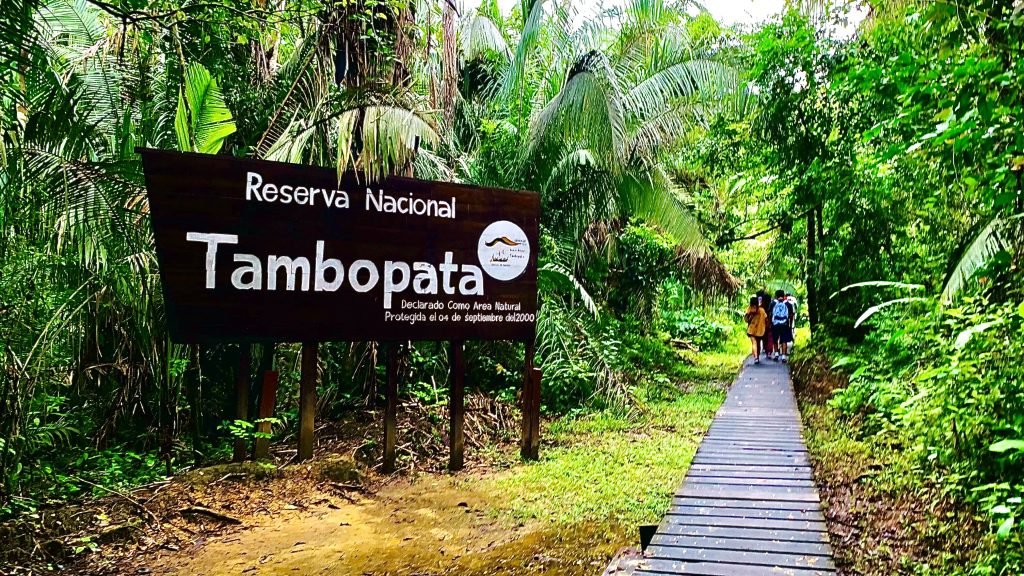
Tambopata National Reserve
The Tambopata National Reserve is 2748 square kilometers of virgin Amazon in southeastern Peru. With more than 230 species of plants and 160 species of mammals preserved by the Peruvian State, unlike Manu National Park, it receives more tourists because this destination is better adapted to ecotourism, and has a large number of regulations and ecological commitments that will ensure that your visit will not have a negative effect on this environment.
Tambopata gets its name from the main river that passes through the area, a Quechua word (Tambo means to deposit and Pata means high place). This river originates in the Peruvian Altiplano (Lake Titicaca's border with Bolivia) and flows into the lowland jungle, within the Peruvian department of Madre de Dios. Tambopata, among other Peruvian Natural Reserves, has a great biodiversity of flora and fauna. It is also a refuge for endangered species and other specimens of exotic fauna. Not to mention that it is home to indigenous communities that promote coexistence tourism, since the benefits of tourism are used by the whole area. It is one of the most visited areas in the southern Peruvian jungle, offering a unique experience within the Amazon that cannot be missed.
Location
The Tambopata National Reserve is located in the southeastern region of Peru, in the province of the same name, within the Amazonian department of Madre de Dios. It is composed of more than 2746 square kilometers of extension conserving an average altitude of around 300 m.a.s.l. in the Peruvian lowland jungle.
Therefore, it extends for miles around the Amazon and is a connection between Cusco, Puno and Manu National Park with the border with Brazil; due to its strategic location it has a vast and impressive range of landscapes composed of wildlife, ancient trees and meandering rivers, all this makes it a unique landscape that besides looking wonderful in pictures is an unforgettable experience that you can not miss.
History of Tambopata
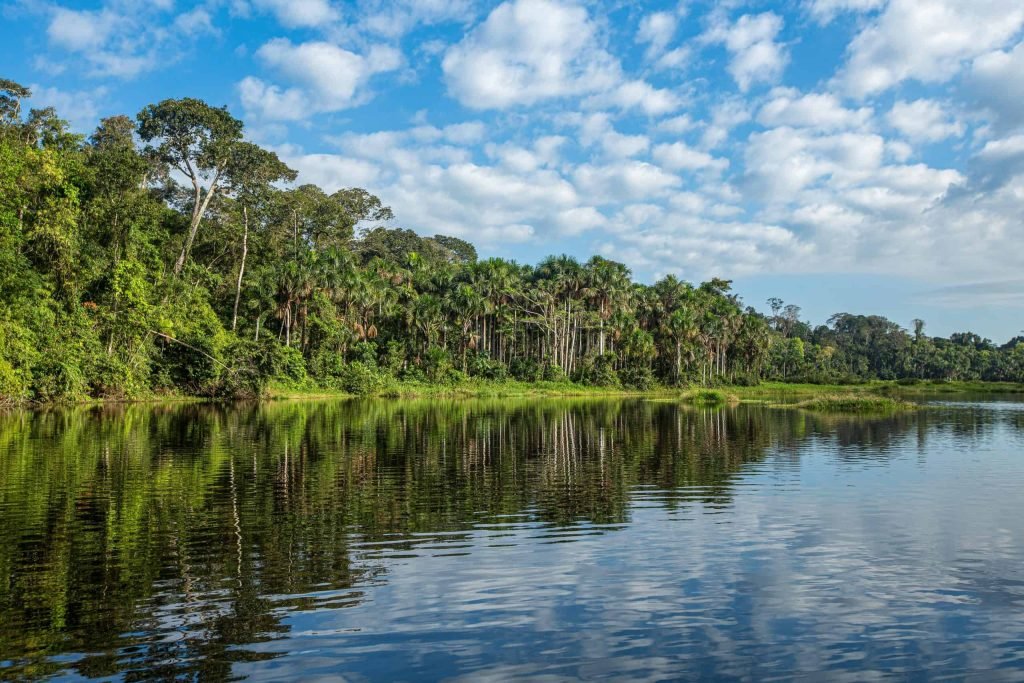
The National Reserve was created on September 4, 2000 by a government resolution. It was the result of the efforts of a group of conservationists and biologists who used the basis of a lot of research since 1999 that explained how the site is home to a unique range of species that can not be transgressed and therefore should be given the official title of National Reserve, and not just as a simple Nature Reserve, since with this old denomination, informal mining and logging still had a free pass for exploitation in the area.
It should be noted that before 2000, Tambopata was considered part of a larger Reserve Zone called Tambopata-Candamo. The "Reserve Zone" designation did not have sufficient protection from the government as a "National Reserve" zone does (according to Peruvian government regulations). The concern to change the designation to "National Reserve" was based on the Tambopata, which was one of the last areas of completely virgin rainforest in the region. In addition, its lowland and foothill rainforests were the only ones connected to higher elevation rainforests and wet savannas, a special feature in the entire South American Amazon that makes up this beautiful ecosystem.
Tambopata National Reserve: A Wildlife Refuge and Amazonian Conservation Success Story
In addition, the area is home to a healthy population of felines, jaguars, tapirs, harpy eagles, giant otters, macaws and other endemic animals that had disappeared in other areas of the Peruvian and South American Amazon. Not to mention the sparse human population (less human impact) that inhabited the area.
Another important condition for its creation as a "National Reserve" was the tourist demand that Manu National Park (nearby) received, and the flow of visitors grew over the years, threatening Manu's reserved and restricted zones. In this sense, Tambopata could serve as an outlet and second option for Manu's high tourist flow. Likewise, the National Reserve could serve as a transit zone to reach the jungles of Bolivia and Bahuaja-Sonene National Park, distributing and minimizing human impact in that part of the Peruvian Amazon. Thus, the creation of the Tambopata National Reserve was a great success for the conservation of the Peruvian Amazonian soil and these ecosystems in particular.
Biodiversity in Tambopata
The National Reserve has one of the greatest biodiversity in the entire Amazon, with more than 1200 types of plants, 100 species of reptiles and amphibians (each), 160 mammals, 179 species of fish, 630 species of birds and 1200 types of butterflies. These are approximations, because every year more and more species are discovered. Some of them are endemic. Therefore, Tambopata is one of the best preserved and most biodiverse areas on the planet. It contains hundreds of species of plants, mammals, insects, reptiles, amphibians, butterflies and birds. Different types of trees and cochas (U-shaped lakes that form an independent body of water); even monkeys, caimans and much more. This is undoubtedly one of the highlights when traveling to Peru's Amazon rainforest.
Who lives in Tambopata?
The native tribe of "Ese Eja" (meaning "people") has lived for centuries in the area surrounding the National Reserve. Of these, approximately 200 families live in the village of Infierno, about 20 families in the Sonene area, and approximately 50 families in the village of Palma Real. They are mainly farmers, fishermen and hunters by tradition, but in recent years, tourism and nut gathering in Brazil are their main sources of income. Their customs and traditions are part of the experience that every visitor should feel during their experience in Tambopata, Peru.
What to visit in Tambopata National Reserve?
Cruises through the Amazon River, tours to destinations such as the Sandoval, Cocococha and Sachavacayoc lagoons, sightings of endemic fauna of the jungle. Day and night excursions to see amphibians, reptiles and jungle predators. Bird watching in collpas, observation from towers that facilitate bird watching, cultural tourism to native communities are some of the activities you can do in the Tambopata region.
A four day tour is the most popular among visitors, this is enough to see the best that Tambopata has to offer and take away all the possible experiences of this beautiful land.
1. Amazon River Cruise
- The Amazon rivers and oxbow lakes (U-shaped lakes that create a separate body of water) provide an ideal habitat for many species of animals. Some of them can be seen from the river cruises themselves, such as the pink river dolphin, the giant river otter, the yellow-headed river turtle and the South American river turtle. In addition, on the banks of its rivers and lakes, you will see macaws and parrots feeding in the trees. As well as capybaras and caimans. Although four of the six species of caimans can be found in Tambopata, only two species are usually seen by visitors, the spectacled caiman and the great black caiman, a spectacle that will delight your eyes!
2. Day and night walks in the jungle
- Day hikes through the jungle are an interesting way to get to know first hand the home of countless species of fauna, plants and trees. Your trip will offer an educational moment to learn about the different habitats, ecosystems and how the rainforest works. For this reason, you will see birds, parrots, monkeys, insects, beautiful orchids and wonderful medicinal plants. You will also see the unmistakable tracks of jaguars, tapirs and other nocturnal animals.
- Night walks through the jungle are also a fascinating and mind-blowing way to explore one of the world's most popular Nature Reserves. In fact, night is the best time to see the wildlife that inhabits the jungle. Most species are only active at dusk. When the sun goes down, you may see strange insects, colonies of leaf-cutter ants, colorful frogs, snakes, caimans and even monkeys. If you're lucky, even a tapir.
3. Collpas
- The Tambopata National Reserve is world famous for having the largest concentration of brightly colored parrots and macaws in the world. The birds gather daily to feed on the clay walls that form naturally on the banks of the river. They feed on clay as part of their diet to counteract the toxins from the fruits they have previously ingested. You will experience a wonderful picture of wildlife as hundreds of parrots fly all over the place. Undoubtedly, a must-see during your visit to the National Reserve.
4. Canopy walks
- Like Mowgli in the Jungle Book, much of life in the Amazon rainforest takes place in the treetops. It is an extraordinary opportunity to see the hidden beauty of the Amazon. The canopy is a rope bridge located more than 25 meters high and stretches many meters across the treetops, connecting one to the other. Once you walk from one treetop to another, you will witness the impressive habitat of the great diversity of animals and different types of exotic birds that inhabit the Tambopata rainforest, such as toucans, macaws, harpy eagles and even monkeys. We promise you a spectacle of sounds and colors. In addition, you will be fascinated by the perfect and captivating postcard-perfect views of the rainforest.
5. Sandoval Lake
- Sandoval is a beautiful lake located within the National Reserve. It extends over some 120 hectares of land. It is famous for harboring a large amount of wildlife. Among them are a huge population of macaws, kingfishers, caimans, otters and herons, among others. The popularity of this area has been vastly increased by visitors (due to its proximity to the modern jungle town called Puerto Maldonado). And because of this, you can choose to take boat excursions on the lake and spot the vast diversity of wild animals. A perfect opportunity.
6. Cocococha and Sachavacayoc Lagoons.
- These enchanting bodies of water are located along the Tambopata River basin. Both lagoons are the refuge and home to a great variety of animals of the Amazon rainforest. The Sachavacayoc lagoon tends to be the most popular place for its different lodges where you can camp around the lagoon. If you are looking for a much more intimate experience with the Peruvian Amazon, these lagoons are the perfect place. In addition, you will find collpas at both lagoons; places where macaws and other endemic Peruvian animals come to supplement their diet and converge on these clay walls. Also, be sure to visit the Chuncho and Colorado clay licks, both located on the banks of the river.
7. Visit the native communities
- Another great option to enjoy in Tambopata is to meet the different indigenous communities that inhabit the area and are willing to share their culture with visitors. Many tours offer the possibility to live with these tribes in different activities. Among them, the native tribes Esa Axis, Harakbut and Matsigenka are the most popular. Many of them do not share true ties and connections with the outside world, unless you are a tourist who wants to learn about their customs with humility and awareness. But there is no need to be alarmed, these tribes have adapted to the tourism that comes to the area and are friendly and pleasant to visitors.
The best time to visit Tambopata
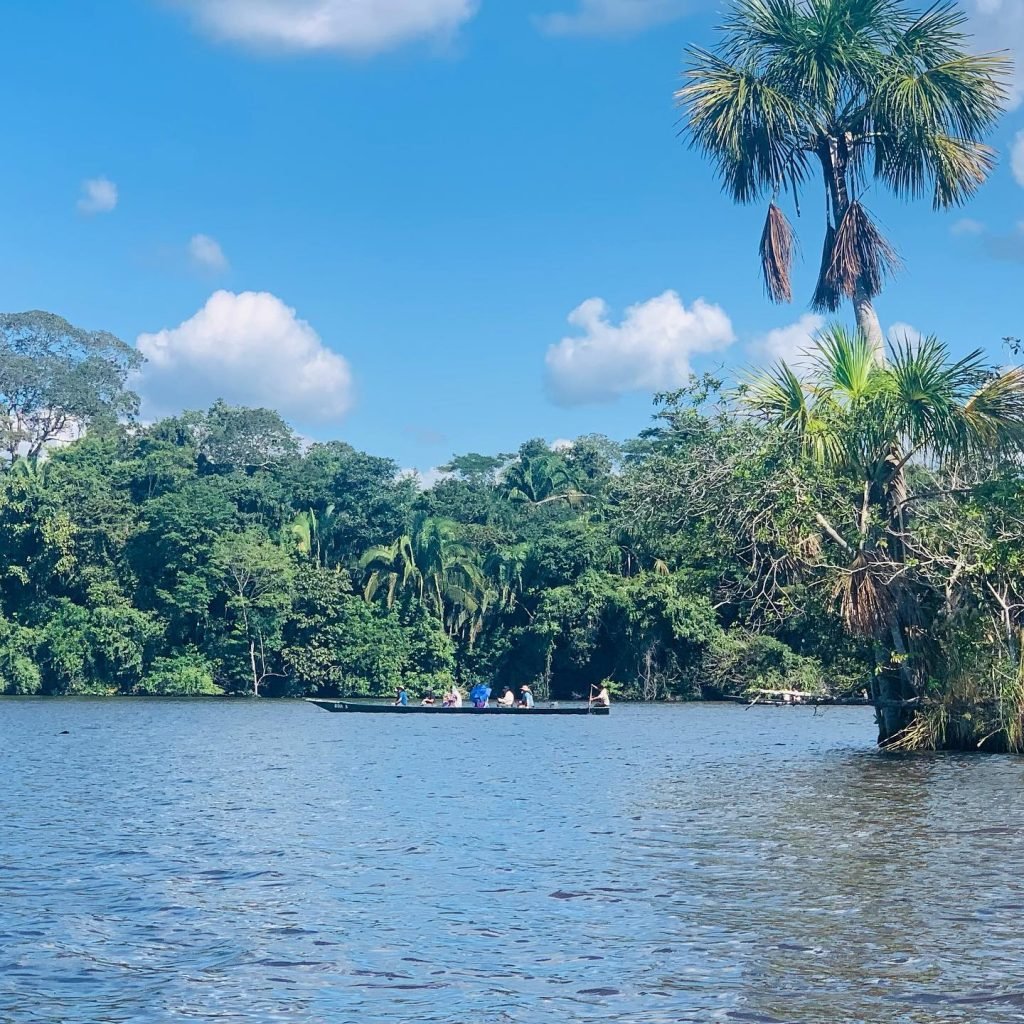
Tambopata National Reserve is slightly seasonal although there is no relevant change in its climate, with its tropical temperature around 17 - 39 degrees Celsius (45ºF 103ºF). The climate you will find in Tambopata is humid and hot most of the year. In addition, it has two distinct seasons, the rainy season (January to February) and the dry season (May to October). So traveling to Tambopata will be a matter of the traveler's preference since the season you choose will not alter your wonderful experience.
During the wet or rainy season, which begins in November and lasts until April (January and February are the rainiest months), you will have a great opportunity to encounter and see wildlife specific to this season. The temperature will be cooler, but there will be a large number of mosquitoes, so take precautions in this case. In addition, due to flooding, most of the jungle trails will be covered with mud, which will also affect exploration activities. However, the advantage of traveling to Tambopata during this season is that you can easily see amphibians or reptiles such as caimans, giant otters and pink dolphins, among others. In addition, due to the high water level caused by the rains, lagoons and lakes will form throughout the jungle.
In the case of the dry season, which runs from May to October, you will have better trail conditions to explore the area on foot. The pros of traveling to Tambopata in this season are that you can see many macaws and parrots in the clay licks because they are nesting. Therefore, they will be more active. As you can see, it is a great opportunity to see colorful birds, chicks and nests!
How to get to the National Reserve
There are generally three steps to get to the Tambopata National Reserve. First, by plane, second by bus, and third by boat. Regardless of the way, you always leave from Lima or Cusco. Of course, the city of Puerto Maldonado is an obligatory point of passage during any of these ways. Therefore, it is necessary to arrive first to this city located at the edge of the jungle to reach your final destination: Tambopata.
By plane
- If you wish to reach the reserve from Lima or Cusco, you must first take a plane. There are daily non-stop flights from Lima to Puerto Maldonado, the journey time is
- You also have the option of taking a direct flight from Cusco, which takes approximately 55 minutes to get to Puerto Maldonado. From this point you can start your journey to the main luxury lodges in the same city, spending a night there.
By bus
- If you are taking an Amazon tour from Cusco, you have another option to get to Puerto Maldonado, the bus. This trip takes 06 hours approx. and the buses have daily routes to the jungle city from the Andean city. This is the best way if you want to enjoy breathtaking landscapes and panoramic views of the Amazon on the way. There are almost two bus frequencies from Lima, and the bus trip takes more than 24 hours, stopping in Cusco.
- Regardless of the route taken to get to Puerto Maldonado. Once there, the travel agencies will pick you up at the airport or bus terminal to take you to their offices to receive information about their Amazon tours. You will then be taken to the city's main port to take the travel agencies' boats to one of the Amazon lodges distributed along the Tambopata basin.
By boat
- From the port, you will have to take the boats to go to the different lodges of the travel agencies located along the banks of the Tambopata River. Don't worry, there are several comfortable motorized canoes that will drop you off at the lodge of your choice. Most Tambopata lodges are located a few hours by boat from the town's port. Boat schedules are designed to be available upon arrival of different flights. There are several safety measures to ensure your protection, plus the boat rides are great, and a favorite activity for many travelers.
What to bring on my trip to the jungle
Normally, the most common clothes and things to take with you, during your trip to the jungle can be the following.
- Sunscreen
- Small backpack
- Light t-shirts
- Binoculars
- Sneakers or sandals for walking around the lodges
- Photographic equipment
- Repellent
- Wide-brimmed hat
- Tightly woven, light-colored, cotton pants
- Flashlight (headlamp) with batteries
- Sunglasses
- Rain suit or rain coat
- Simple bills (dollars or soles)
- Boots for walking in mud
- Trekking boots
Other useful tips
To enjoy traveling to Tambopata, it is necessary to take some things into account.
- It is advisable to hire a good travel insurance before starting the different tours in the Amazon. The risk of getting infected with a tropical disease is higher than in other parts of the world, such as malaria, an endemic disease of the Amazon, remember to consult your travel agency about the necessary vaccinations for your destination, in some places they will not allow you to enter if you do not have vaccinations for certain diseases.
- It is important to be vaccinated against yellow fever. Your local doctor can arrange this for you. Inform him/her about your trip to the Amazon and when you will be traveling.
- Note that to enter the Tambopata National Reserve, it is necessary and mandatory (by Peruvian government law) to go with an official and qualified tourism agency.
- You can also visit it if you are on a Tambopata tour offered by the different lodges or in a group led by a professional guide.
- Another great recommendation is to get your entrance ticket at the Puerto Maldonado National Protected Area Service, of course, if you are traveling alone, which is open Monday to Friday from 7:30 am to 1:00 pm and then reopens from 3:00 pm to 6:00 pm. On Saturdays you will find it open from 9:00 to 12:00. But as we said before, visiting Tambopata with an official and authorized travel agency is necessary. This way, they take care of buying your tickets and you focus on the most important thing, enjoy.
- It is also necessary to carry your passport at all times.
The Tambopata National Reserve, as we explore in this article, is a fascinating place to explore. You will find an endless number of birds to contemplate and photograph. And within the Tambopata National Reserve, you can enjoy a magical moment with exotic species in a unique environment where you can connect with nature in its purest form. So, what are you waiting for to visit Tambopata in Peru? We are looking forward to your visit!
Random Posts

Fishing in the Madre de Dios River

Fishing in Sandoval Lake

Can I find vegetarian meals in Machu Picchu?

 Español
Español  Português
Português 
 English
English 





